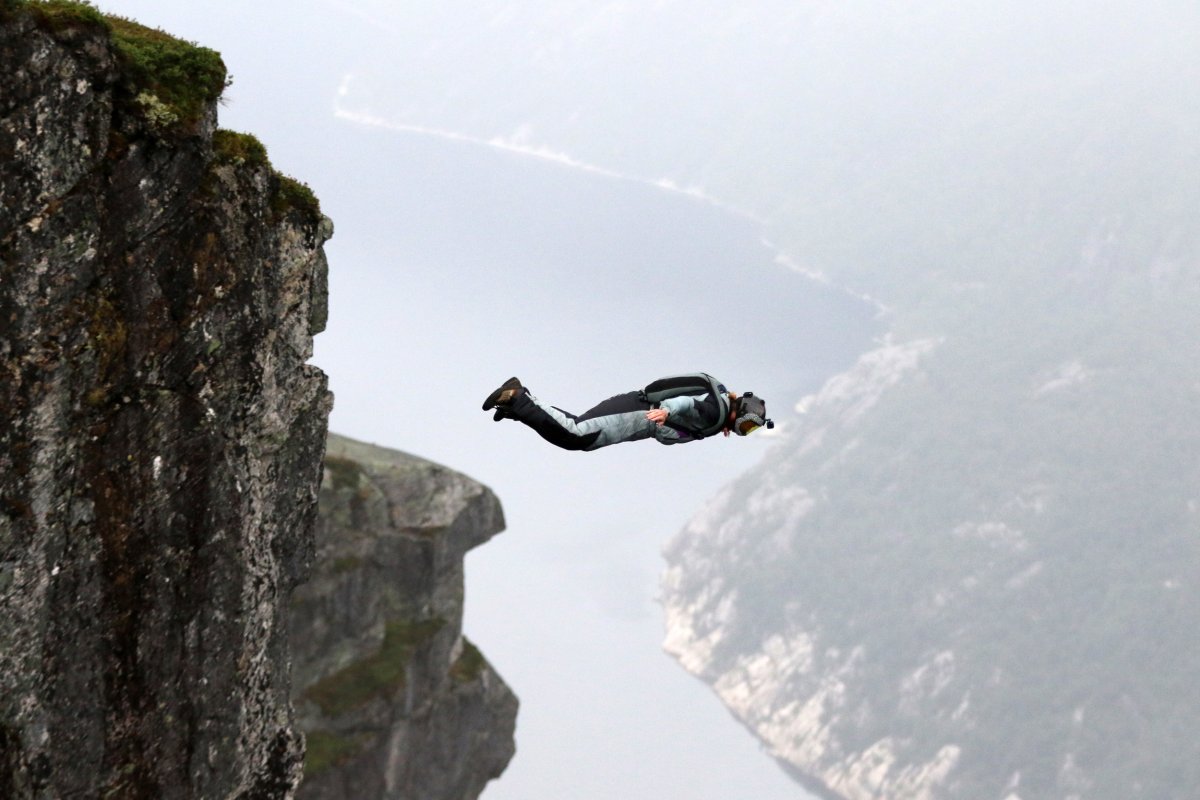A man who leaped from a mountain in Italy as part of a BASE jumping stunt has died after his wingsuit and parachute weren't deployed.
Mark Andrews, 65, who was from Cornwall in the U.K., fell more than 1,300 feet from the popular jumping spot at Paganella in the Italian Dolomites mountain range on Saturday.
Andrews, who had gone to the mountain alone that day, died instantly. He had previously completed nearly 600 jumps since he began the sport in 2014, the MailOnline reported. The reason his parachute didn't deploy remains unclear.

BASE jumping is an extreme sport that involves jumping from fixed objects and opening a parachute in time to slow their descent. The name of the sport is an acronym for the objects commonly leaped from: buildings, antenna, spans (bridges) and earth (cliffs, mountains).
The record for the lowest-ever BASE jump is held by Felix Baumgartner, who leaped 95 ft from the Christ the Redeemer statue in Rio de Janeiro.
The BASE Fatality List records 451 deaths since April 1981, not including deaths after May 5 this year. One study in the British Journal of Sports Medicine from 2008 also found that the "overall annual fatality risk for all object types during the year 2002 was estimated at about one fatality per 60 participants."

"The area where [Andrews'] accident happened is one of the most dangerous and it's considered only for experts as it's quite tricky," one base jumper told MailOnline.
"It's not a straightforward descent, there are rock and tree ledges for the first 400 meters [1,310 feet] before it then hits a straight 1,500 meters [4,920 feet] straight down," they said. "You have to be careful with the wind as well and that's why only experienced professionals jump from that point with others heading to another location about 30km [18.6 miles] away at Mount Brenta."
Falling from great heights is dangerous due to the speed at which the human body hits the ground: the terminal velocity of a human is between around 120 mph and 180 mph, depending on their falling position and individual weight. The median lethal distance—the height at which half the people who fall without a parachute won't survive—is around 48 feet, according to medical reference book Trauma Anesthesia. One study published in the journal Critical Care Medicine in 2004 found that of 287 fall victims, those who fell from 98 feet or higher had a 100 percent fatality rate.
A mountain rescue helicopter recovered Andrews' body, which will remain at a hospital nearby until it can be repatriated. He had been living with his wife in Budapest.
"He came to base jumping quite late. He's only been doing it since 2014 but he packed a lot into those nine years," another base jumper who knew Mark told the MailOnline. "He was fearless and will be missed."
Do you have a tip on a science story that Newsweek should be covering? Do you have a question about BASE jumping? Let us know via science@newsweek.com.
Uncommon Knowledge
Newsweek is committed to challenging conventional wisdom and finding connections in the search for common ground.
Newsweek is committed to challenging conventional wisdom and finding connections in the search for common ground.
About the writer
Jess Thomson is a Newsweek Science Reporter based in London UK. Her focus is reporting on science, technology and healthcare. ... Read more





